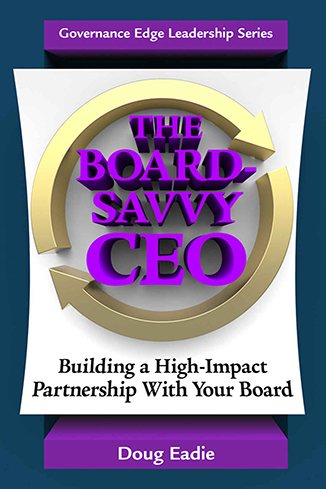 Over the past year, four podcasts addressing business model updating have been posted at this blog, featuring Rich Browdie of the Benjamin Rose Institute on Aging, Michael Anderson and Guy Legault of the Canadian Society of Association Executives, Rick Homans of the Tampa Bay Partnership, and Jeff Thomson of the Institute of Management Accountants. At this point, I think it will be useful to remind readers that the kind of out of the box change involved in updating business models succeeds only when it is spearheaded by a CEO playing the “Innovator-in-Chief” role with gusto. Certainly Rich, Michael, Guy, Rick, and Jeff have excelled at handling this demanding portfolio.
Over the past year, four podcasts addressing business model updating have been posted at this blog, featuring Rich Browdie of the Benjamin Rose Institute on Aging, Michael Anderson and Guy Legault of the Canadian Society of Association Executives, Rick Homans of the Tampa Bay Partnership, and Jeff Thomson of the Institute of Management Accountants. At this point, I think it will be useful to remind readers that the kind of out of the box change involved in updating business models succeeds only when it is spearheaded by a CEO playing the “Innovator-in-Chief” role with gusto. Certainly Rich, Michael, Guy, Rick, and Jeff have excelled at handling this demanding portfolio.
Experience has taught me that CEOs who succeed at the Innovator-in-Chief role are what I think of as “change-savvy,” meaning that they:
- Are technically very knowledgeable about best practices in the rapidly changing area of change planning and management. You’ll never hear a truly change-savvy CEO extolling the virtues of traditional long-range (or “strategic”) planning as a change tool, much less catch her fondling a ten pound five-year plan.
- Realize that successfully bringing off out-of-the-box change against all odds requires that he make leading the change planning and implementation process a top-tier priority. In practice, this means that the change-savvy CEO makes a firm commitment of time to leading change from the top, and never tries to delegate one piece or another of this leadership role to lieutenants.
- And recognize that leading out-of-the-box change as Innovator-in-Chief of the organization is more psychological and political in nature than technical. Not only does the change-savvy CEO understand that fear is more often than not at the heart of staff resistance to change, she also takes strong, visible steps to allay that fear, for example through the clear articulation of vision and other motivational steps that are intended to inspire andenergize participants in the change process. The change-savvy CEO also pays close attention to the transformation of key stakeholders into ardent Change champions.
Leading the out-of-the-box change charge as your organization’s Innovator-in-Chief, the CEO plays three key roles that are critical to accomplishing significant change in your organization:
Chief Process Designer – Making sure that the structures and processes that are required to plan and implement out-of-the-box change are well-designed, both technically (for example, the planning steps that board members, staff, and external stakeholders go through actually result in technically sound change initiatives that can be implemented) and from a psychological/political perspective (for example, participation in the planning process turns key stakeholders into owners of out-of-the-box change initiatives and consequently “change champions” for those initiatives).
Chief Motivator – Through her words and deeds – usually in-person and always very visibly – building support for, and commitment to, out-of-the-box change, countering the inevitable inertia and resistance that work against successful change.
Chief Enabler – Enabling the change process to move forward from plans to action in a full and timely fashion, through clear and firm direction, incisive decision-making, the allocation of sufficient resources in terms of both staff time and money, and – when necessary – disciplinary action to overcome efforts to sabotage change.
In these challenging times, leading out of the box change is critical to organizational stability and growth over the long run, so we hope you’ll comment and share your change leadership experience.





